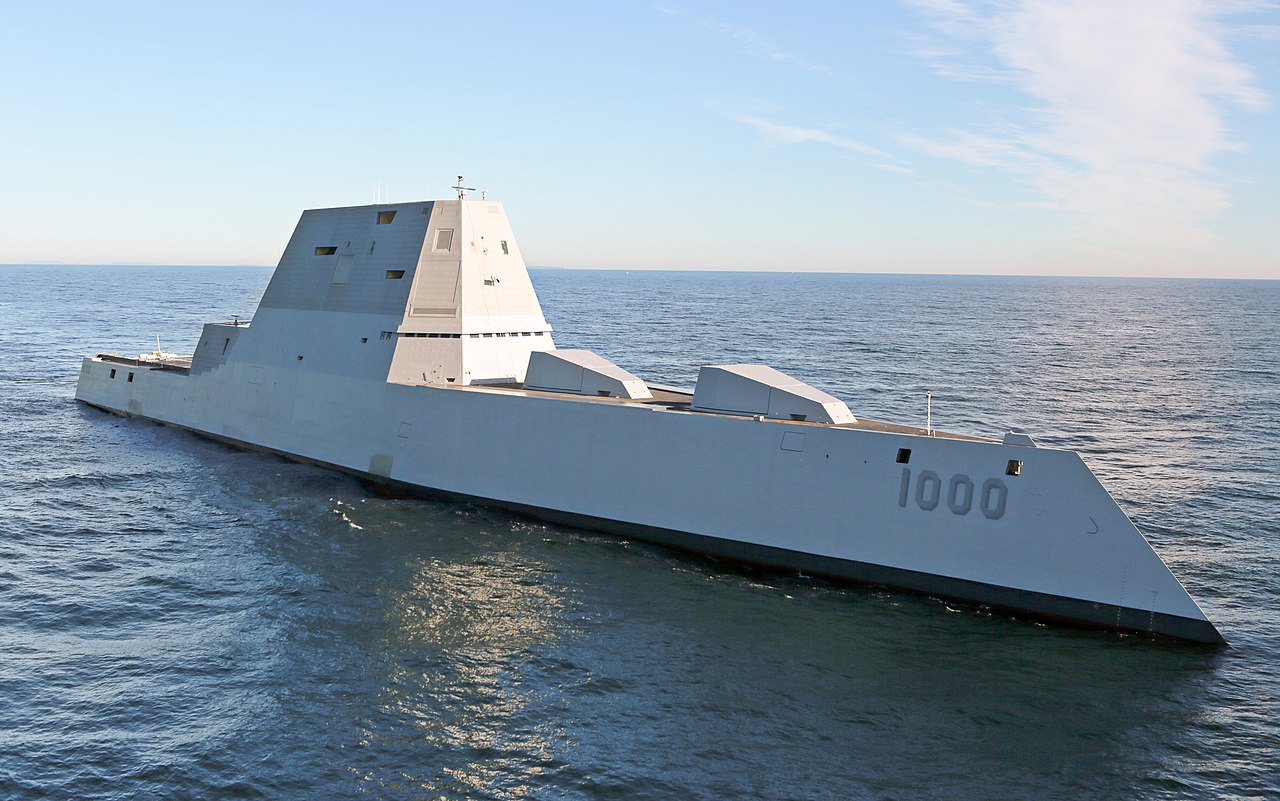The American shipbuilder Huntington Ingalls Inc. (HII) has been awarded a US$154.8-million contract to modernize the US Navy’s USS Zumwalt (DDG 1000) destroyer, equipping the vessel with a hypersonic missile system.
The Zumwalt recently arrived at Ingalls Shipbuilding in Pascagoula, Mississippi, where it is set to undergo a modernization process, including the installation of the Navy’s Conventional Prompt Strike hypersonic missile system, with an expected completion date of September 2025.
Cmdr. Arlo Abrahamson, a spokesperson of the Naval Surface Force, stated earlier this month that these enhancements will guarantee that the Zumwalt remains among the most advanced and formidable vessels in the US Navy.
The new contract comes after a US$10.5 million planning agreement issued in January for the modernization period planning of the Zumwalt-class guided missile destroyers, namely the USS Zumwalt (DDG 1000) and USS Michael Monsoor (DDG 1001).
According to a statement from HII, “Michael Monsoor will receive the CPS install at Ingalls during a future modernization period. Additionally, Lyndon B. Johnson (DDG-1002) arrived at Ingalls in January 2022 and is undergoing a combat systems activation.”
Bruce Knowles, the ship construction manager at Ingalls Shipbuilding, expressed his honor in serving the sailors of Zumwalt and extending a warm welcome to their community. He added that the Ingalls team is fully prepared to assist in this import.

The first full deployment of the Zumwalt is anticipated to occur in the later part of 2026 or the early months of 2027. During this deployment, it will function under the command of the US 7th Fleet and the US Indo-Pacific Command.
However, earlier this year, the Government Accountability Office (GAO) indicated that the deployment timeline for the C-HGB (Conventional Prompt Strike Hypersonic Glide Body) on the Zumwalt might experience delays due to issues in the weapon’s development process.
If the hypersonic weapon is not prepared for integration into the DDG 1000 during the planned maintenance period mentioned earlier, the Navy may be required to extend the scheduled maintenance period or wait until the next designated period to incorporate the system onto the ship.
US Navy’s Efforts To Deploy Hypersonic Missiles
The Navy has set its sights on deploying hypersonic weapons aboard the Zumwalt by 2025. Lockheed Martin is pivotal in providing the Navy with hypersonic missiles that can seamlessly integrate into the Navy’s Zumwalt-class destroyers.
The company serves as the prime integrator for the hypersonic weapon program, called Conventional Prompt Strike in the Navy and Long Range Hypersonic Weapon in the Army.
Despite both services utilizing a standard munition, they employ different launchers tailored to their specific needs. In collaboration with the Navy, the Army has been actively developing the missile and is on track to field the weapon system by the conclusion of this year.
In February, Lockheed announced its plans to conduct flight tests for a ship-based hypersonic missile launcher in 2024. Under the new contract, the original twin 155mm Advanced Gun Systems on the destroyer will be replaced with four 87-inch missile tubes.
These tubes will be able to house three Common Hypersonic Glide Bodies (C-HGB) each, which are hypersonic missiles collaboratively developed by the US Army and the Navy.
These missiles are integral components of the Pentagon’s conventional strategic weapon systems, designed to have the capability to strike any target worldwide with minimal advance notice.
While the US Navy’s submarines are on the roadmap to incorporate hypersonic weapons into their arsenal eventually, the modernization of the Zumwalt-class destroyers marks a significant milestone as these vessels become the first of any kind within the US Navy to be armed with hypersonic weaponry.
In contrast, the Navy’s latest Block V Virginia-class submarines are slated to be integrated with Common Hypersonic Glide Body missiles, with an expected timeframe around 2029.
Meanwhile, the Zumwalt class vessels have faced various challenges, including equipment-related issues, that have impacted their operational effectiveness.
However, the ongoing modernization efforts to enable these vessels to carry advanced hypersonic missiles represent a crucial step forward.
This transformation has the potential to significantly boost the capabilities of the United States Navy, providing a new level of strategic advantage and underscoring the enduring importance of the Zumwalt class in modern naval operations.
- Contact the author at ashishmichel(at)gmail.com
- Follow EurAsian Times on Google News